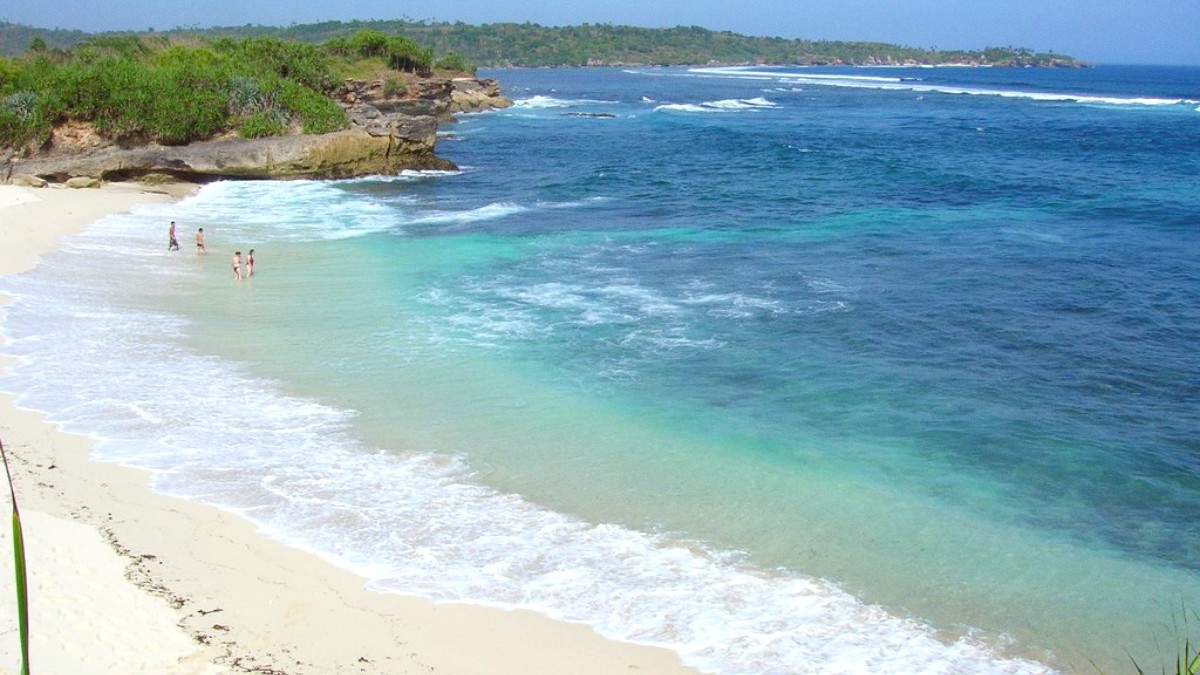
Bali, Indonesia
These are the must-visit spots that define Nusa Lembongan's appeal, mainly natural spectacles. All listed landmarks are natural sites, open 24/7 with no entrance fees. Independent visits are possible. Guided tours by scooter or golf buggy are available, offering local insights and convenient transport.
Consider GetYourGuide for pre-booked tours to these landmarks.
Always prioritize personal safety when visiting coastal attractions. Conditions can change rapidly.
Nusa Lembongan does not have archaeological sites or ancient ruins.
Traditional Balinese architecture can be seen in local temples and older guesthouses, reflecting cultural ties to Bali.
Pura Segara (near Devil's Tear) and Pura Puncak Sari (highest point) are active temples. Dress modestly (shoulders/knees covered) and remove shoes in prayer areas.
The traditional seaweed farms along the coast represent a significant economic and cultural heritage.
No specific memorial sites or monuments related to tourism.
Nusa Lembongan excels in natural beauty, from its coastlines to its marine ecosystems.
No formal parks or botanical gardens. The Mangrove Forest in the northeastern part of the island is an unique natural area.
Devil's Tear (crashing waves), Panorama Point (views of Jungut Batu, ocean, Mount Agung), Blue Lagoon (intensely turquoise water, dramatic cliffs on Nusa Ceningan), Secret Beach (secluded spot on Ceningan).
Waters offer excellent snorkeling/diving with manta rays (year-round), Mola Mola (July-Oct), turtles, reef sharks, and colorful reef fish. No land safaris.
Prominent limestone cliffs along the coast, especially at Devil's Tear and Blue Lagoon on Nusa Ceningan, create dramatic ocean vistas.
Jungut Batu Beach, Mushroom Bay, Dream Beach, Sandy Bay, and Secret Beach (on Nusa Ceningan). Each offers a different ambiance.
The Mangrove Forest is the main waterway, suitable for exploration by traditional boat or kayak. No natural freshwater lakes exist.
A rustic, treehouse-style restaurant and accommodation, offering unique views and a secluded atmosphere, off the main tourist trail.
A quiet beach on Nusa Ceningan, less visited, often suitable for surfing beginners or peaceful relaxation.
Observe the traditional livelihood of seaweed farming up close, especially at low tide in Jungut Batu or along the eastern coast.
Venture beyond popular spots to discover Nusa Lembongan's quieter treasures.
Capture the essence of Nusa Lembongan with these picturesque moments.
Consider booking tours via GetYourGuide for convenient access to these scenic spots.
Capture breathtaking colors and powerful ocean dynamics.
Capture expansive views of the island's landscape and distant Bali.
Explore marine life with crystal-clear visibility.
Iconic bridge connecting Lembongan and Ceningan, a popular photo spot.
insights into the island's natural and historical aspects.
While not a hub for formal cultural institutions, Nusa Lembongan offers a chance to observe daily Balinese Hindu life.
The island's natural features play an important role in its ecosystem and local livelihood.
The surrounding waters are celebrated for their rich biodiversity and incredible dive sites.
Many professional dive centers offer courses and fun dives.
How Nusa Lembongan connects to its larger sister island, offering more exploration.
A day trip to Nusa Penida from Lembongan is highly recommended for expanded sightseeing.
Various ways to navigate and explore the island's attractions at your own pace.
Roads can be steep and rough in some areas, so drive with caution.
The sun can be intense. Use high-SPF sunscreen, wear a hat, and sunglasses, especially for daytime exploration.
Stay hydrated throughout the day, especially when walking or riding. Bottled water is widely available.
When visiting temples or local villages, dress modestly and observe local etiquette to show respect.